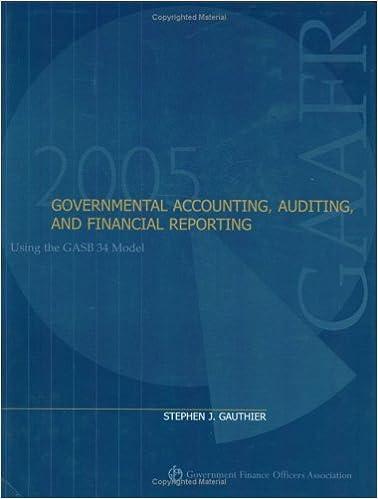


Costs per Equivalent Unit The following information concerns production in the Baking Department for March. All direct materials are placed in process at the beginning of production. ACCOUNT Work in Process-Baking Department ACCOUNT NO. Balance Date Item Debit Credit Debit Credit Mar. 1 Bal., 6,300 units, 4/5 completed 11,592 31 Direct materials, 113,400 units 158,760 170,352 31 Direct labor 43,660 214,012 31 Factory overhead 24,560 238,572 31 Goods finished, 114,900 units 229,548 9,024 31 Bal. ? units, 4/5 completed 9,024 a. Based on the above data, determine each cost listed below. Round "cost per equivalent unit" answers to the nearest cent. 1. Direct materials cost per equivalent unit 2. Conversion cost per equivalent unit 3. Cost of the beginning work in process completed during March 4. Cost of units started and completed during March 5. Cost of the ending work in process b. Assuming that the direct materials cost is the same for February and March, did the conversion cost per equivalent unit increase, decrease, or remain the same in March? Costs per Equivalent Unit Georgia Products Inc. completed and transferred 191,000 particle board units of production from the Pressing Department. There was no beginning inventory in process in the department. The ending in-process inventory was 17,000 units, which were 2/5 complete as to conversion cost. All materials are added at the beginning of the process. Direct materials cost incurred was $624,000, direct labor cost incurred was $224,310, and factory overhead applied was $52,610. Determine the following for the Pressing Department. Round "cost per equivalent unit" answers to the nearest cent. a. Total conversion cost A b. Conversion cost per equivalent unit A c. Direct materials cost per equivalent unit $ A Cost of Units Completed and in Process The charges to Work in Process-Assembly Department for a period, together with information concerning production, are as follows. All direct materials are placed in process at the beginning of production. Work in Process-Assembly Department Bal., 7,000 units, 35% completed 18,410 To Finished Goods, 161,000 units Direct materials, 165,000 units @ $1.3 214,500 Direct labor 485,900 Factory overhead 188,960 Bal. ? units, 55% completed a. Based on the above data, determine the different costs listed below. If required, round your interim calculations to two decimal places. 1. Cost of beginning work in process inventory completed this period. 2. Cost of units transferred to finished goods during the period. 3. Cost of ending work in process inventory. $ 4. Cost per unit of the completed beginning work in process inventory, rounded to the nearest cent. b. Did the production costs change from the preceding period? c. Assuming that the direct materials cost per unit did not change from the preceding period, did the conversion costs per equivalent unit increase, decrease, or remain the same for the current period? Costs per Equivalent Unit The following information concerns production in the Baking Department for March. All direct materials are placed in process at the beginning of production. ACCOUNT Work in Process-Baking Department ACCOUNT NO. Balance Date Item Debit Credit Debit Credit Mar. 1 Bal., 6,300 units, 4/5 completed 11,592 31 Direct materials, 113,400 units 158,760 170,352 31 Direct labor 43,660 214,012 31 Factory overhead 24,560 238,572 31 Goods finished, 114,900 units 229,548 9,024 31 Bal. ? units, 4/5 completed 9,024 a. Based on the above data, determine each cost listed below. Round "cost per equivalent unit" answers to the nearest cent. 1. Direct materials cost per equivalent unit 2. Conversion cost per equivalent unit 3. Cost of the beginning work in process completed during March 4. Cost of units started and completed during March 5. Cost of the ending work in process b. Assuming that the direct materials cost is the same for February and March, did the conversion cost per equivalent unit increase, decrease, or remain the same in March? Costs per Equivalent Unit Georgia Products Inc. completed and transferred 191,000 particle board units of production from the Pressing Department. There was no beginning inventory in process in the department. The ending in-process inventory was 17,000 units, which were 2/5 complete as to conversion cost. All materials are added at the beginning of the process. Direct materials cost incurred was $624,000, direct labor cost incurred was $224,310, and factory overhead applied was $52,610. Determine the following for the Pressing Department. Round "cost per equivalent unit" answers to the nearest cent. a. Total conversion cost A b. Conversion cost per equivalent unit A c. Direct materials cost per equivalent unit $ A Cost of Units Completed and in Process The charges to Work in Process-Assembly Department for a period, together with information concerning production, are as follows. All direct materials are placed in process at the beginning of production. Work in Process-Assembly Department Bal., 7,000 units, 35% completed 18,410 To Finished Goods, 161,000 units Direct materials, 165,000 units @ $1.3 214,500 Direct labor 485,900 Factory overhead 188,960 Bal. ? units, 55% completed a. Based on the above data, determine the different costs listed below. If required, round your interim calculations to two decimal places. 1. Cost of beginning work in process inventory completed this period. 2. Cost of units transferred to finished goods during the period. 3. Cost of ending work in process inventory. $ 4. Cost per unit of the completed beginning work in process inventory, rounded to the nearest cent. b. Did the production costs change from the preceding period? c. Assuming that the direct materials cost per unit did not change from the preceding period, did the conversion costs per equivalent unit increase, decrease, or remain the same for the current period









